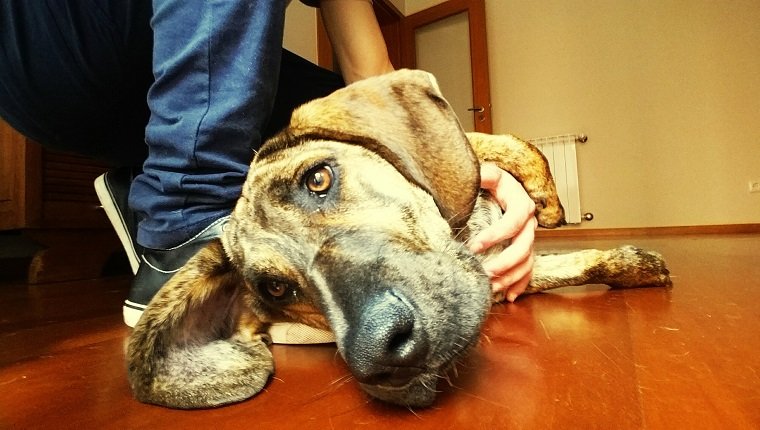Cirrhosis of the liver in dogs results from a build-up of scar tissue in the liver from damage by disease, injury, or toxins. It is often grouped with fibrosis of the liver, which is the first stage of liver scarring. Cirrhosis is a more serious condition where scar tissue takes over most of the liver.
Dogs need at least 20 percent of normal liver function to survive. If cirrhosis causes liver function to go below 20 percent, the condition becomes terminal. This is why it is so important to consult your veterinarian if you see the signs of cirrhosis and form a treatment plan.
Here’s what you should know about the symptoms, causes, and treatments for cirrhosis of the liver in dogs.
Symptoms Of Cirrhosis Of The Liver In Dogs

The symptoms of cirrhosis of the liver in dogs can vary depending on the cause of the condition.
When liver damage occurs and gets worse, you may see these symptoms:
- Anorexia, loss of appetite, or weight loss
- Diarrhea, often black and tarry or with blood present
- Constipation
- Depression or lack of energy
- Vomiting
- Fever
- Increased thirst or urination
- Orange color in urine
- Swelling or tenderness in the abdomen
- Yellowish coloring of the gums or other body parts
- Skin lesions or ulcers
- Seizures
- Blindness
- Prolonged bleeding
Causes Of Cirrhosis Of The Liver In Dogs

Cirrhosis of the liver in dogs can be caused by a number of factors, and it can be inherited or acquired later in life.
Some breeds are more predisposed, including Bedlington Terriers, Chihuahuas, Cocker Spaniels, Doberman Pincers, Labrador Retrievers, Maltese, Skye Terriers, Springer Spaniels, Standard Poodles, and West Highland White Terriers.
Hepatitis is one of the main causes of liver disease in dogs, though there are many other diseases and substances that a dog could be exposed to that result in cirrhosis.
Here are a few possible causes of cirrhosis of the liver in dogs:
- Bacterial, viral, or fungal infection
- Gum disease
- Congestive heart failure
- Heartworm infection
- Liver cancer
- Blockage of the bile duct
- Inflammatory bowel disease
- Pancreatitis
- Physical injury to the liver
- Exposure to acetaminophen, NSAIDs, anticonvulsants, antibiotics, steroids, or medication for fungal infections and parasites
Treatments For Cirrhosis Of The Liver In Dogs

Treatment for cirrhosis of the liver in dogs often depends on the cause. In cases where symptoms are mild, veterinarians may offer supportive outpatient care, especially if dogs are still eating normally.
If a dog has stopped eating or shows more severe signs, then they may need hospitalization with intravenous fluids and possibly a feeding tube. In cases where there’s fluid build-up in the abdomen, the fluid will need to be removed.
If the cause is exposure to a medicine or treatment, then that treatment will likely be stopped. If a bacterial, viral, or fungal infection is causing the liver damage, then those conditions will have to be treated.
Your veterinarian also might recommend dietary changes or restrictions to slow liver damage. The goal of treatment for cirrhosis of the liver is to slow or stop damage and prevent further harm, as reversing the condition is not possible.
Do you take steps to prevent conditions like cirrhosis of the liver in your dog? How do you keep your pets healthy? Let us know in the comments below!





